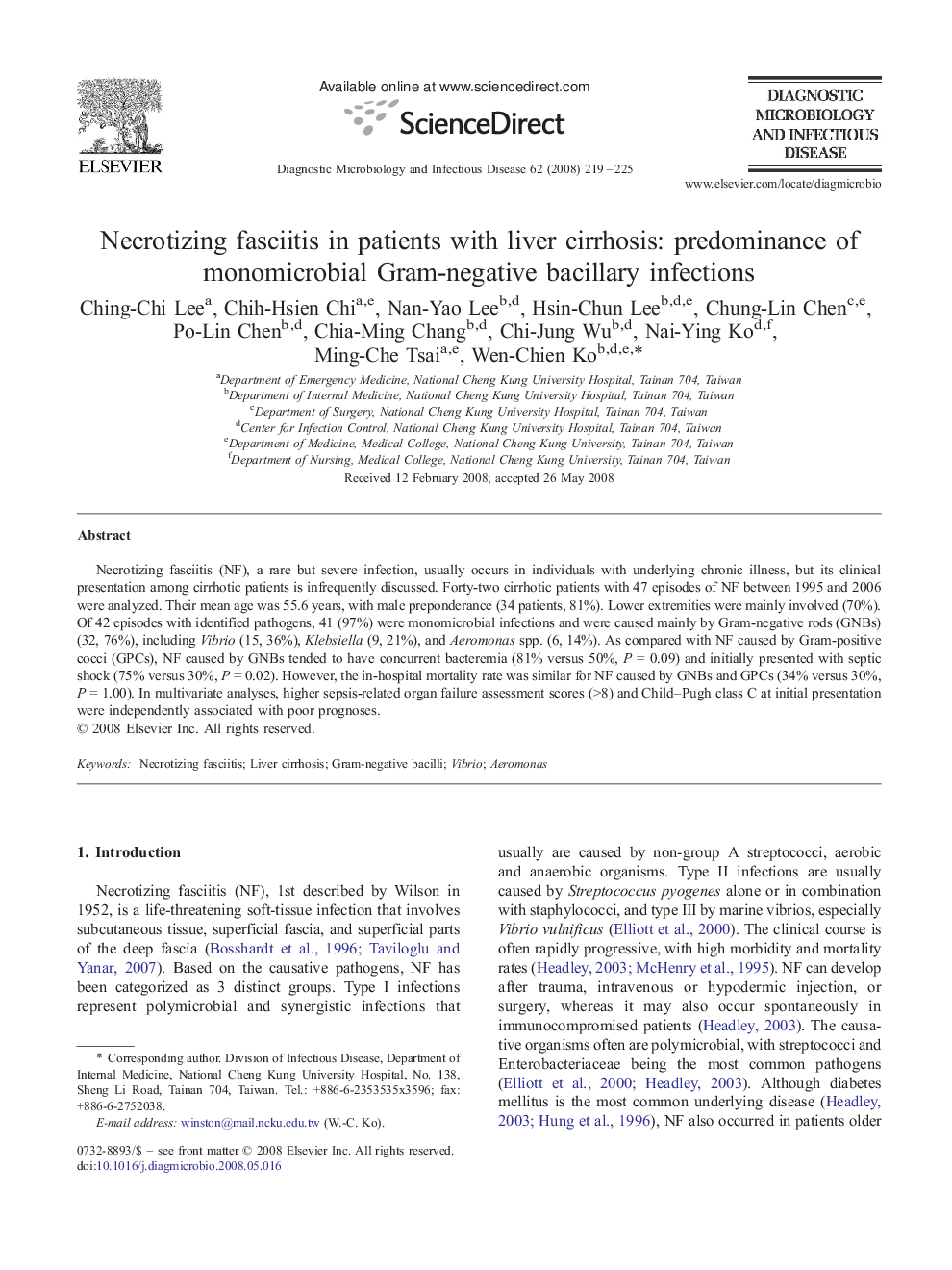| Article ID | Journal | Published Year | Pages | File Type |
|---|---|---|---|---|
| 3347845 | Diagnostic Microbiology and Infectious Disease | 2008 | 7 Pages |
Necrotizing fasciitis (NF), a rare but severe infection, usually occurs in individuals with underlying chronic illness, but its clinical presentation among cirrhotic patients is infrequently discussed. Forty-two cirrhotic patients with 47 episodes of NF between 1995 and 2006 were analyzed. Their mean age was 55.6 years, with male preponderance (34 patients, 81%). Lower extremities were mainly involved (70%). Of 42 episodes with identified pathogens, 41 (97%) were monomicrobial infections and were caused mainly by Gram-negative rods (GNBs) (32, 76%), including Vibrio (15, 36%), Klebsiella (9, 21%), and Aeromonas spp. (6, 14%). As compared with NF caused by Gram-positive cocci (GPCs), NF caused by GNBs tended to have concurrent bacteremia (81% versus 50%, P = 0.09) and initially presented with septic shock (75% versus 30%, P = 0.02). However, the in-hospital mortality rate was similar for NF caused by GNBs and GPCs (34% versus 30%, P = 1.00). In multivariate analyses, higher sepsis-related organ failure assessment scores (>8) and Child–Pugh class C at initial presentation were independently associated with poor prognoses.
